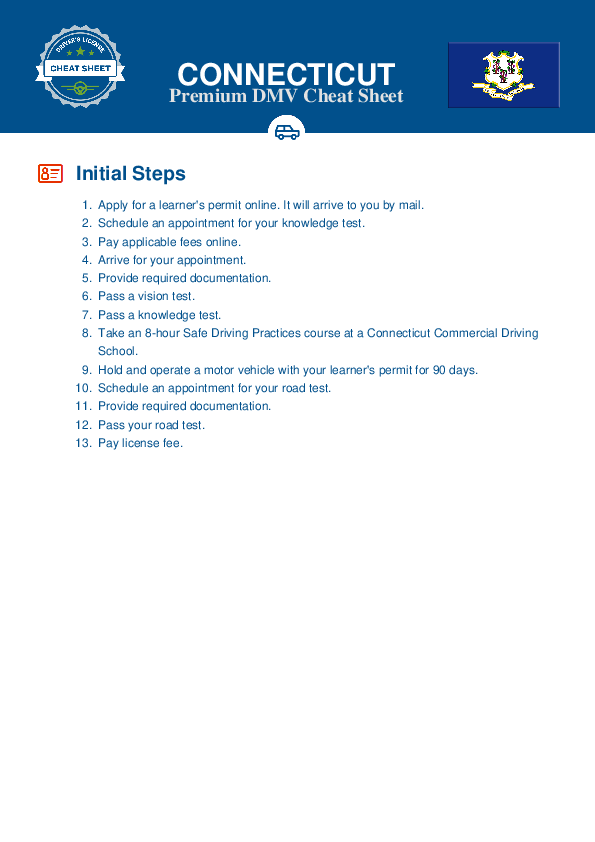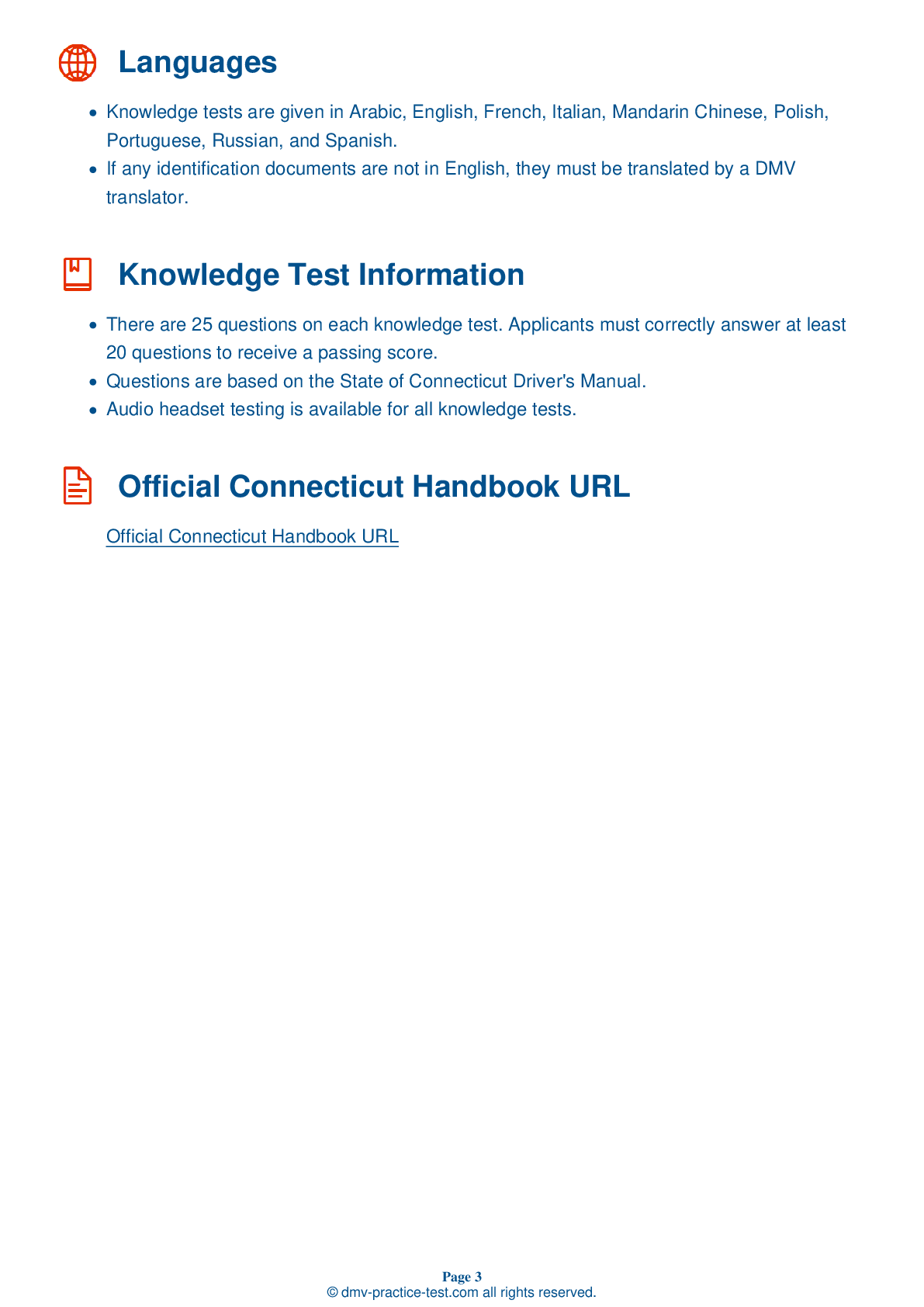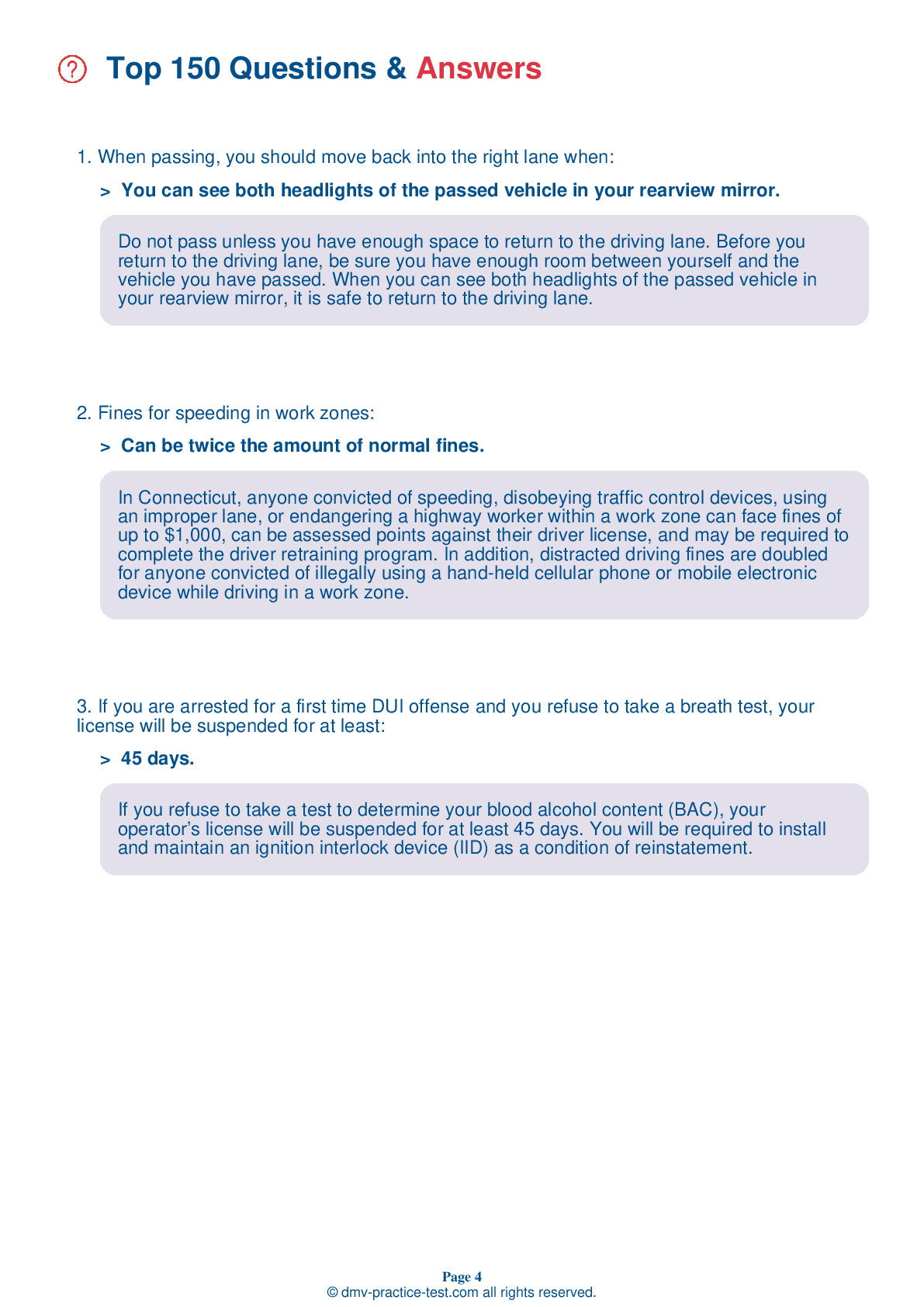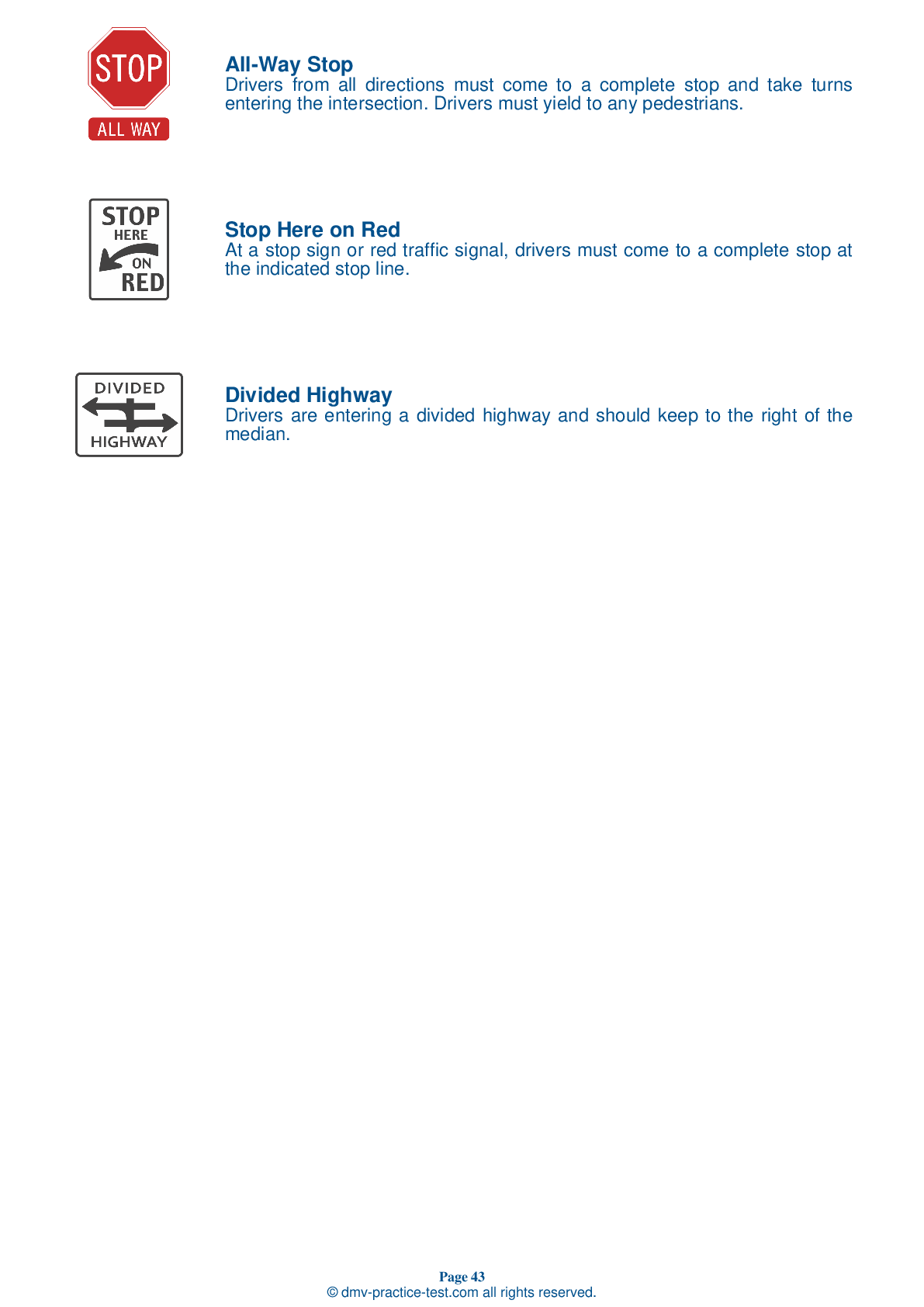FREE Connecticut DMV Practice Test #23 Page 3 of 3
This set of Connecticut DMV practise tests was just updated for January 2025. It includes questions based on the Connecticut Driver Handbook's most essential traffic signs and regulations for 2025. Use actual questions that are very similar (often identical!) to the DMV driving permit test and driver's licence exam to study for the DMV driving permit test and driver's licence exam.
Each practise test question has a hint and explanation to assist you in remembering the concepts. The written component of the official DMV test will include questions about road rules, traffic signs, and driving statutes, as well as information from the Driver Handbook.
To achieve the required passing grade, you must correctly answer 20 of the 25 questions. Take our DMV practise exam to help you prepare for your Connecticut instruction permit or driver's licence.
The DMV exam is available in several languages.
Using any form of testing help will result in an automatic fail, and the DMV may take further action against your driver's licence, so avoid it.
17 . Any amount of alcohol in the blood may affect a driver's:
A driver’s ability to safely operate a vehicle may be impaired at any BAC level, even a level lower than the legal limit. Any amount of alcohol can affect one’s judgment and physical coordination. Driving under the influence of even a small amount of alcohol can lead to criminal charges.
18 . Excessive speed:
Excessive speed is one of the most common contributing factors to vehicle crashes. Excessive speed does not save time and often leads to high-risk decision-making.
19 . This sign means:
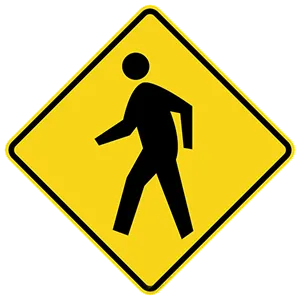
Warning signs are usually yellow with black markings. This sign alerts drivers to where pedestrians may be crossing. If a pedestrian is crossing in a crosswalk marked with this sign, drivers must stop and remain stopped until the pedestrian is no longer in the crosswalk.
20 . When driving near a distracted driver, you should give them plenty of space and maintain a safe following distance of at least:
Give a distracted driver plenty of space by maintaining a safe following distance of at least three to four seconds. Be very careful when passing a driver who seems to be distracted. Distracted drivers may not be aware of your presence and may drift in front of you.
21 . When used on roadways, bicycles are considered:
Bicycles are considered vehicles when used on roadways. Bicyclists and motorists are expected to follow the same rules of the road.
22 . When you see this sign, you should stop and:
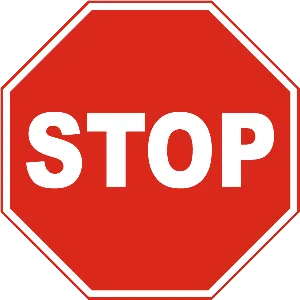
At a stop sign, you must come to a full stop and check for traffic in all directions before proceeding.
23 . This yellow warning sign means:
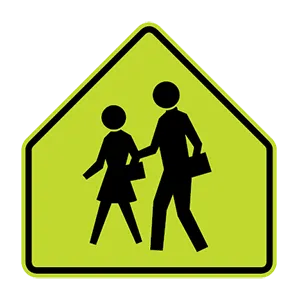
This sign is placed on roads near schools to warn drivers to slow down, drive with caution, and watch for children.
24 . When changing lanes:
When changing lanes, glance over your shoulder to check for traffic in your blind spot. You may need to look several times before changing lanes. You must keep track of what traffic is doing in front of you as well as what traffic is doing in the lane next to you.
25 . When stopped at a red traffic light with a green arrow, you may proceed in the direction of the arrow if you:
You may proceed in the direction that a green arrow signal is pointing if you are in the proper lane, regardless of any other signals that are displayed. Before turning, you must yield the right-of-way to pedestrians and vehicles already within the intersection.
See the exact questions that will be on the 2025 Connecticut DMV exam.
99.2% of people who use the cheat sheet pass the FIRST TIME
LT gives us an insight on how the cheat sheet provided her with all the study questions she needed before taking her test.
Joe initially studied with the handbook and failed his test, he eventually found us online, studied and pass his test the first time around.
